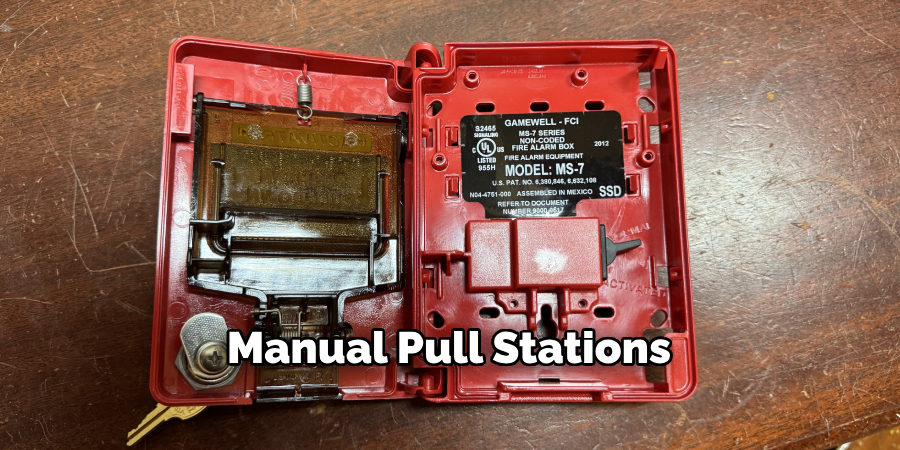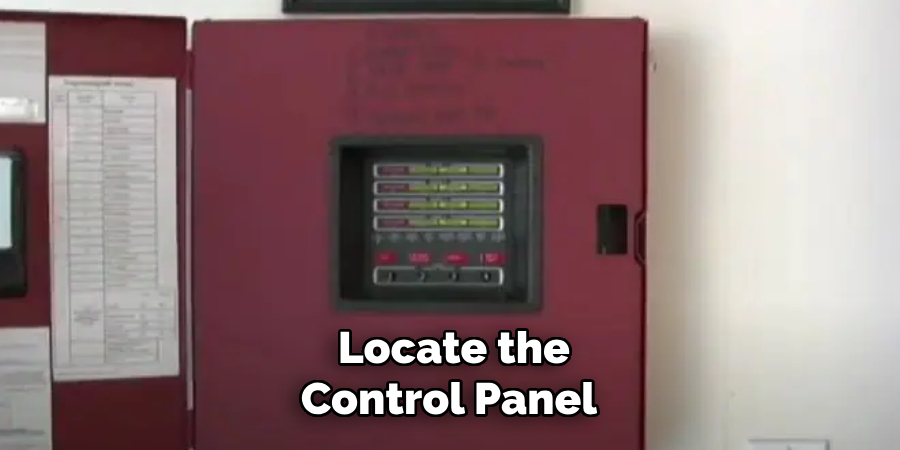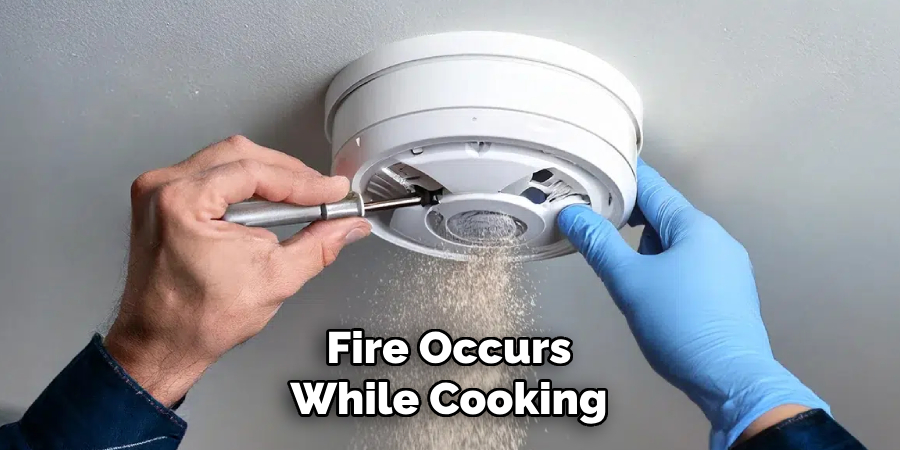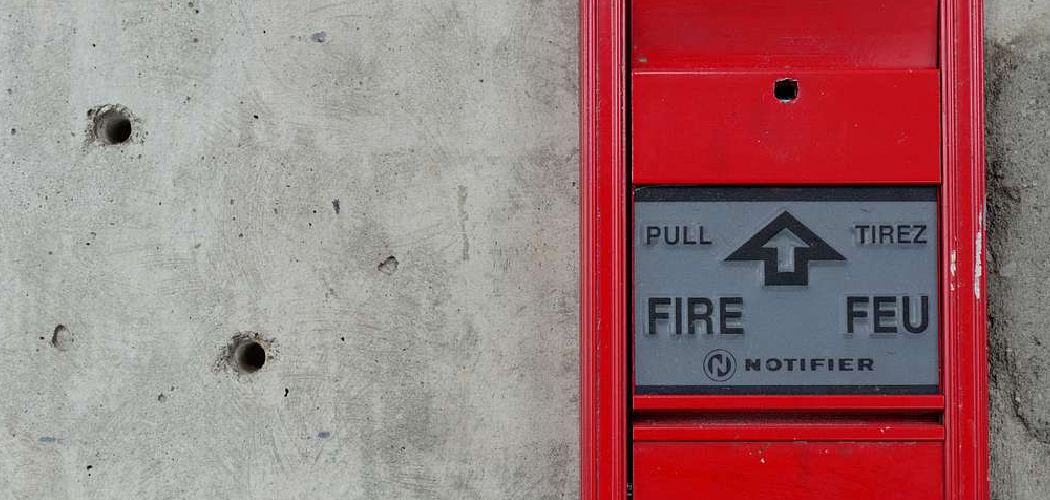A fire alarm system is a critical safety feature designed to alert occupants in the event of a fire. However, there may be instances where the system activates unnecessarily, such as due to cooking smoke or a malfunctioning detector. Knowing how to properly turn off a fire alarm system is essential to prevent disruption while ensuring safety.

This guide on how to turn off fire alarm system will provide step-by-step instructions on shutting down the system effectively and responsibly.
Why is It Important to Know How to Turn Off a Fire Alarm System?
Knowing how to turn off a fire alarm system is important for various reasons. Firstly, in case of a false alarm, being able to quickly and safely disable the system can prevent unnecessary panic and disruption. It also helps in avoiding potential fines or penalties from emergency services responding to frequent false alarms.
Moreover, understanding the correct procedure for turning off a fire alarm system can help prevent damage from accidental activations. For example, if you are aware of which specific area or device triggered the alarm, you can focus on addressing that particular issue without having to shut down the entire system.
Needed Materials
A Fire Alarm Control Panel:
This is the main control unit for the fire alarm system and is typically located in a central area of the building. It allows you to view and monitor any activated alarms and also has the capability to silence or reset them.
Smoke and Heat Detectors:
These are the devices that detect the presence of smoke or heat in the building. They are typically placed on ceilings or walls throughout the building and should be regularly tested to ensure they are functioning properly.
Manual Pull Stations:
These are emergency buttons that can be manually activated by individuals in case of a fire emergency. They should be located near exits or in easily accessible areas for quick response.

Fire Extinguishers:
While not technically a part of the fire alarm system, having fire extinguishers readily available is crucial for quickly controlling small fires before they spread. Make sure to have them mounted in visible locations and have them inspected regularly to ensure they are functional.
Smoke and Heat Detectors:
These devices sense the presence of smoke or heat in the air and trigger the alarm system. They should be installed in every room, hallway, and stairwell for maximum coverage.
Sprinkler Systems:
Sprinkler systems are activated by heat and work to extinguish fires by spraying water over them. They are an essential component of fire protection and can help prevent a small fire from turning into a large one. Regular maintenance and inspections should be conducted to ensure their proper functioning.
7 Simple Step-by-Step Guidelines on How to Turn Off Fire Alarm System
Step 1: Locate the Control Panel
The first step in turning off a fire alarm system is to locate the control panel. The control panel is typically installed near the entrance of the building or in a maintenance room.

It is the central hub for managing the fire alarm system and will have buttons, switches, or keypads for silencing and resetting the alarm. Look for labeled signage or consult the building’s fire safety plan to identify its exact location.
Step 2: Identify the Alarm System Type
After locating the control panel, the next step is to identify the type of fire alarm system installed. Fire alarm systems can vary widely, including conventional, addressable, or wireless systems. Check the labels, model information, or user manual typically available on or near the control panel.
Understanding the alarm system type is crucial as the method to silence or reset the alarm may differ depending on the specific system in use. If necessary, consult the manufacturer’s documentation or a technical guide for the system to ensure proper handling.
Step 3: Enter Your Code
If the fire alarm system requires a code to silence or reset it, locate the keypad on the control panel. Input the designated code carefully using the numeric keypad. The default code may be provided in the system’s manual, but if it has been customized, you will need the updated code.
Ensure you enter the code correctly to avoid triggering additional alerts or locking the system. If you are unsure of the code or encounter any issues, contact the system administrator or consult the manufacturer for assistance.
Step 4: Press the Silence Button
Once you have entered the correct code, locate the “Silence” button on the control panel. Press it firmly to deactivate any ongoing alarms or alerts. Ensure that the system acknowledges the command, which may be indicated by a change in the panel display or the cessation of the alarm sound.

If the alarm does not silence, double-check the entered code or refer to the troubleshooting section of the user manual for further guidance.
Step 5: Evacuate if Necessary
If the alarm persists or you suspect a genuine emergency, prioritize safety and evacuate the premises immediately. Follow any established evacuation routes or guidelines specific to your location. Alert others in the building and ensure they are aware of the situation.
Once safely outside, contact the appropriate emergency services to assess and resolve the issue. Do not re-enter the building until it has been deemed safe by authorized personnel.
Step 6: Contact Emergency Services
If you have not already done so, ensure you contact emergency services promptly to report the situation. Provide them with detailed information, including the nature of the emergency, your location, and any relevant observations. Stay on the line until the operator has all the information they need and follow any instructions they provide.
Prompt communication with emergency services can help ensure a faster response and resolution. Always remain calm and clear while speaking to the authorities to avoid confusion.
Step 7: Follow Up
After the incident has been addressed, it is important to follow up to ensure all necessary actions have been taken. Check in with any individuals affected by the situation to provide support or assistance, if needed. Additionally, if there are any reports or documentation required, ensure they are completed and submitted promptly.
Following up with emergency services or relevant authorities may also help clarify any lingering concerns or gather additional information. Taking the time to reflect on the event can help improve preparedness for the future and highlight any areas for improvement in handling similar situations.
Following these steps on how to turn off fire alarm system in an emergency can help ensure the safety of everyone involved and minimize any potential damage. It is important to remain calm and follow established protocols in order to effectively handle the situation. Prompt communication, thorough assessment, and appropriate action are key components in successfully dealing with a fire alarm emergency. Remember to always prioritize safety and have a plan in place for addressing these types of emergencies.
Additional Tips for Fire Safety
- Regularly test your fire alarms to ensure they are functioning properly.
- Create a fire escape plan for your home or office and practice it regularly.
- Keep flammable items away from heat sources and never leave them unattended.
- In the event of a fire, get out of the building immediately and call 911.
- If you are unable to safely exit the building, stay low to the ground and cover your mouth with a cloth or towel to avoid smoke inhalation.
- Be aware of potential fire hazards in your surroundings, such as blocked exits or faulty electrical wiring.
- Educate yourself on how to properly use fire extinguishers and have them easily accessible in case of emergency.
- Consider installing a sprinkler system in your home or office for added protection against fires.
Frequently Asked Questions
Q1: Can I Use Water to Put Out a Fire?
A: It depends on the type of fire. Water should never be used on an electrical or grease fire as it can make the situation worse. Know which type of fire extinguisher is appropriate for different types of fires.
Q2: What Should I Do if a Fire Occurs While Cooking?

A: If you have a grease fire, never use water to try and extinguish it. Instead, turn off the heat source and cover the pan with a lid or baking sheet to cut off the oxygen supply. Use a fire extinguisher if needed, but always remember to stay safe and call for help if the fire gets out of control.
Q3: How Often Should I Test My Smoke Detectors?
A: It is recommended to test your smoke detectors at least once a month. This will ensure they are working properly and give you enough time to replace batteries or make any necessary repairs.
Q4: What Should I Do If My Smoke Detectors Are Not Working?
A: If your smoke detectors are not working, try replacing the batteries. If that doesn’t solve the issue, you may need to replace the entire unit. It is important to have functioning smoke detectors in your home, so make sure to address any issues promptly. Also, remember to test them regularly and change the batteries at least once a year.
Conclusion
Ensuring the safety of your home and loved ones should always be a priority, and maintaining properly functioning smoke detectors is a crucial part of this effort.
By testing your smoke detectors regularly, replacing batteries annually, and addressing any issues immediately, you can significantly reduce the risk of fire-related emergencies. A small amount of effort today can make a big difference in protecting what matters most.
Thanks for reading this article on how to turn off fire alarm system.

